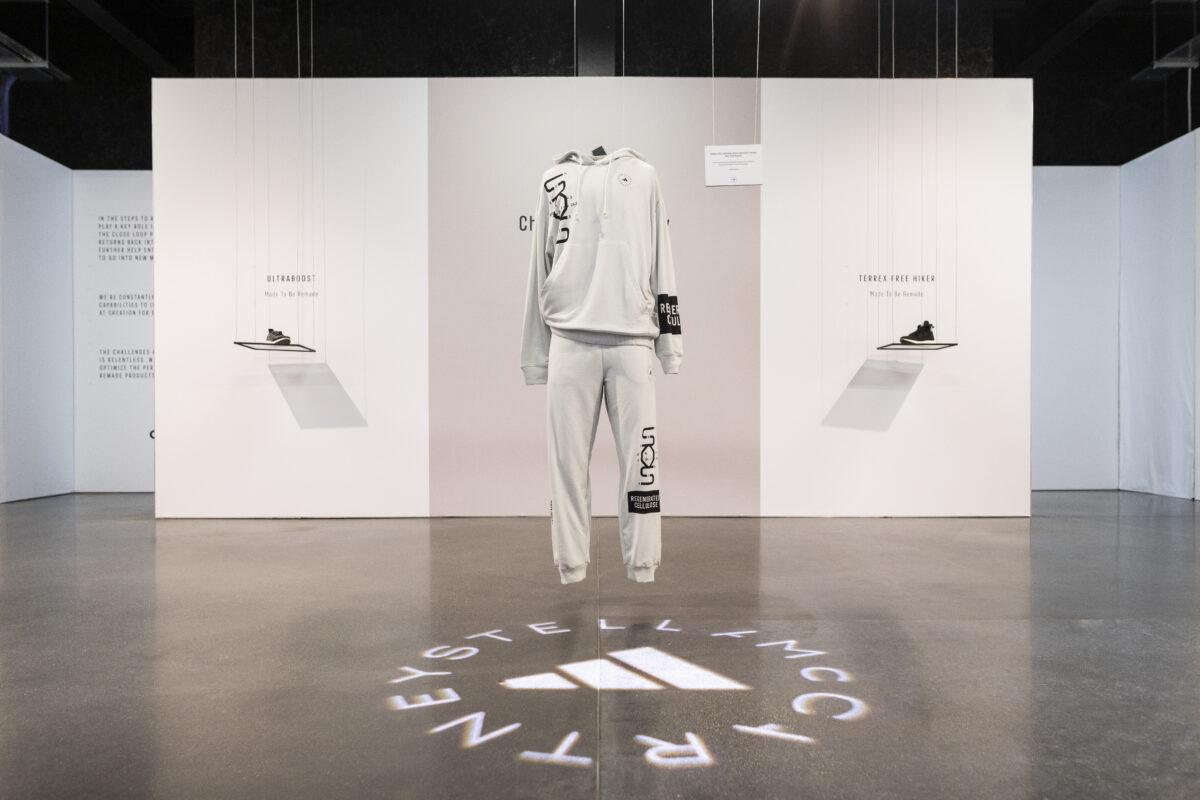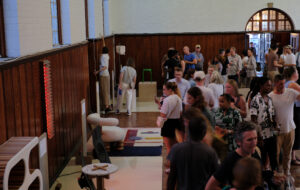During this year’s London Design Festival, adidas showcased how the brand is driving its sustainability journey forward
 Photography by adidas by Stella McCartney
Photography by adidas by Stella McCartney
Chasing Circularity, an eye-opening exhibition by adidas exploring sustainability at Design London, provided a transparent view of the brand’s journey to making products that are ‘made to be remade’.
When adidas first revealed FUTURECRAFT.LOOP in 2019, adidas’ first shoe made entirely from one material so it can be ground down and remade into a new product after use, it kick-started the sportswear brand’s circular transition towards producing a wide range of goods.
‘Back then it was a beta test to understand how to create products with circularity in mind, how consumers would react and how we could get the product back,’ explains Paul Smith, Senior Director of Sustainability Concepts (Footwear and Apparel) at adidas. ‘That was the beginning of some of the items we see at Design London.’
 Photography courtesy of adidas. For any Made To Be Remade product, users can return it once worn out by scanning a QR code on the adidas app
Photography courtesy of adidas. For any Made To Be Remade product, users can return it once worn out by scanning a QR code on the adidas app
With innovation deeply rooted in adidas’ culture, the latest Made To Be Remade apparel and footwear collections comprise, among others, a gender-neutral sportswear tracksuit—the label’s FW22’s pioneering piece—for its adidas by Stella McCartney range. Made using viscose and available October 6th, the garment was designed in collaboration with an EU Consortium and aims to demonstrate the potential of a circular fashion ecosystem.
Across a three-year timeline, the consortium collected and sorted post-consumer end-of-life textiles, which using pioneering Infinited Fiber technology, have been regenerated into a new textile fiber called Infinna™️. Made from 99% post-consumer textile waste, Infinna™️ looks and feels just like virgin cotton. Infinna™️ fiber, which by fiber name belongs to the viscose family, is then turned into a yarn blended with organic cotton for garment production.
Creating an innovative piece for its Made To Be Remade program, this unique technology means consumers can wear the new adidas by Stella McCartney sportswear set until it’s worn out, and then return it by scanning the QR code on the adidas app. The product can be sent back to Infinited Fiber Company’s recycling stream where it can be broken down to be reused, ensuring less waste goes into the fashion eco-system.
 Photography courtesy of adidas featuring Terrex AX3 Hiking Shoes and adidas Terrex Made To Be Remade Padded Anorak
Photography courtesy of adidas featuring Terrex AX3 Hiking Shoes and adidas Terrex Made To Be Remade Padded Anorak
‘When it comes to circularity, we need to consider two main starting points,’ explains Fabrizio Gallo, Senior Manager of Sustainability Strategy at adidas. ‘One is for companies to design with the end in mind, which is exactly what we’re trying to do with Made To Be Remade, so products that are returned can be turned into something new. Secondly, it’s also about our consumers—they need to be engaged and return a product at the end of its life.’
As part of the collection, adidas also unveiled its latest Made To Be Remade element-defying sportswear and running collection, including the Made To Be Remade Ultraboost running shoe, which was initially launched last year. Meanwhile the label’s Terrex Made To Be Remade Padded Anorak, an insulated jacket made with the new loop creation process, is a trail-ready piece that provides a better alternative to the standard economy of make, use and dispose.
‘The Terrex Made To Be Remade Padded Anorak is a great example of how we can bring in more and more complexity into a product,’ says Smith. ‘We don’t have to make compromises in design and we’re still designing with circularity in mind.’
 Photography courtesy of adidas featuring Chasing Circularity at Design London
Photography courtesy of adidas featuring Chasing Circularity at Design London
‘As part of what we do, we need to be consulting universities too, so we can publish and spread the information to anyone who wants to understand what we do. It’s exciting for us to see this happening, to be expanding how we create product and provide more opportunities for not having things go only into a wardrobe.’
By exploring the process of circularity and inviting the world behind the scenes to discover how adidas is innovating to reduce plastic pollution, Chasing Circularity highlights the importance of transparency and traceability while also providing hope for a better future.
‘It’s very nice to be at Design London, a design exhibition, one that is quite well known and had circularity as an underlying theme,’ shares Smith. ‘I think that’s also special because you can see that this shouldn’t just be in our industry but across industries. We hope this doesn’t just stay within an adidas or a fashion loop but that there is an exchange of materials through furniture, tiles and across the industry in the future.’
Get a curated collection of design and architecture news in your inbox by signing up to our ICON Weekly newsletter
















